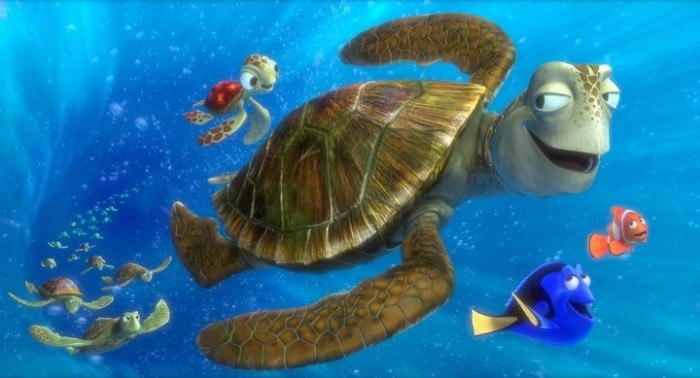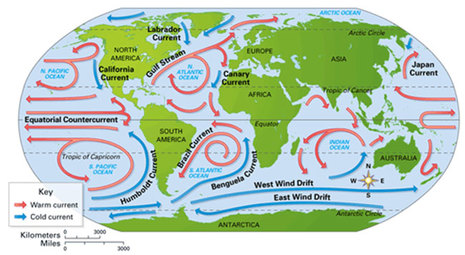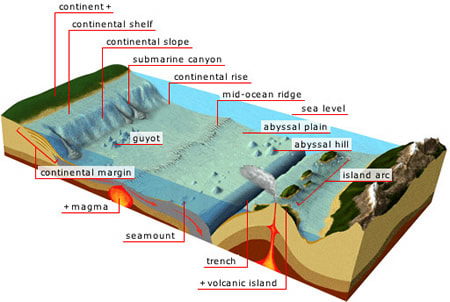|
ESSENTIAL QUESTIONS
1. How did the ocean originally form? 2. What is the difference between an ocean and a sea? 3. What does the sea floor look like? 4. How do earthquakes occur in the ocean? 5. Why is the ability to navigate the ocean useful to biologists? 6. How do the physical characteristics of ocean water affect marine organisms? 7. What role do ocean currents play in the distribution of marine organisms? 8. How are waves formed? 9. Why is the western coast of South America such a productive fishing area? 10. What causes tides? |
|
WARM UPS
UNIT 2 PRIME TIME PRIME TIME SHEET |
VOCABULARY
UNIT 2 VOCABULARY |
GEOLOGY OF THE OCEAN
(CHAPTER 3)
(CHAPTER 3)
|
DAY 1: CHANGING SEA FLOOR
NOTES-CH3-Changing Sea Floor Guided Notes-CH3-Changing Sea Floor Plate Tectonics Movement-Standard Oreo LAB & Plate Tectonics HONORS
Plate Tectonics Movement-Honors Explore:
LATITUDE & LONGITUDE GAME |
VOCABULARY
PRIME MERIDIAN, TROPIC OF CANCER, TROPIC OF CAPRICORN, EQUATOR, INTERNATIONAL DATE LINE, CONTINENTAL SHELF, CONTINENTAL RISE, RIDGE SYSTEM, RIFT VALLEY, SUBDUCTION ZONE, SEAMOUNT, ABYSSAL PLAIN, RIFT ZONE, CONVERGENT PLATE BOUNDARY, FRACTURE ZONE, MANTLE, LITHOSPHERE, ATHENOSPHERE, CRUST, MAGMA |
|
DAY 2: OCEAN BOTTOM
NOTES-CH3-Ocean Bottom Guided Notes-CH3-Ocean Bottom Ocean Floor Map Ocean Bottom Research-Standard DAY 3: OCEAN NAVIGATION
NOTES-CH3-Ocean Navigation Guided Notes-CH3-Ocean Navigation Nautical Charts Worksheet-Standard |
WATER, WAVES & TIDES
(CHAPTER 4)
(CHAPTER 4)
|
DAY 4: NATURE OF WATER
NOTES-CH4-Nature of Water Guided Notes-CH4-Nature of Water Properties of Water LAB Properties of Water Lab Replacement |
VOCABULARY
PYCNOCLINE, HALOCLINE, THERMOCLINE, VERTICLE OVERTURN, THERMOCLINE CIRCULATION, PLUNGER, FORCED WAVE, FETCH, SWELL, TSUNAMI |
DAY 7: WAVES & TIDES
NOTES-CH4-Waves & Tides
Guided Notes-CH4-Waves & Tides
Chasing Mavericks Film Questions
NOTES-CH4-Waves & Tides
Guided Notes-CH4-Waves & Tides
Chasing Mavericks Film Questions
Extra Credit:
Ocean Waves Research
Ocean Waves Research
|
KAHOOT - MS UNIT 2 Test Review
|
DAY 9: UNIT TEST


